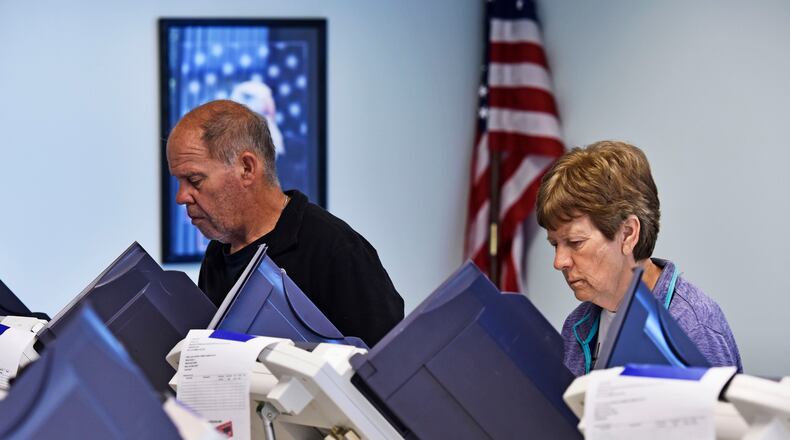RELATED: Political rookie Sara Carruthers beats two veteran politicians
“The problem with Butler County primaries there is just too often there’s just no competition,” said Miami University political science professor Chris Kelley. “There’s just no enthusiasm to get out and vote in primaries, in particular, because just like Tuesday on my ballot, half of those ballots didn’t have a name on it. It takes a lot to get out the vote when you’re facing someone who’s not facing competition, or (facing) competition you’ve never heard of.”
There were only four contested Republican primary contests (Ohio governor and treasurer, Butler County Commission and the 51st Ohio House District) and just two contested Democratic primary contests (Ohio governor and the 8th Congressional District).
Turnout statewide, which was 20.9 percent, was not too far out of line compared to past gubernatorial primaries, but it wasn’t as bad as 2014’s primary election when 16.95 percent of voters turnout out. This year’s primary will grow slightly when yet-to-be-counted absentee and provisional ballots are calculated statewide, but not by much.
RELATED: Here’s why Tuesday’s election was one for the women of Butler County politics
Despite the low turnout, University of Cincinnati political science professor David Niven said 2018 is still shaping up to be a good year for Democrats, and they’ll make headway in the Statehouse.
“It’s probably not enough to carry the day in Butler County but good enough to make pretty significant changes in the Statehouse when you factor in the full breadth of the races,” he said. “The Statehouse is such a tall order (to win a majority) for Democrats; the minority is so tiny in both the House and the Senate. The Senate Democratic Caucus, they can have a meeting at an average sized dining room table and have every senator there.”
There hasn’t been a Democratic majority in the Ohio House since the 128th General Assembly in 2009 and the Ohio Senate since the 115th General Assembly in 1983.
Winning a majority in 2018 in the House or the Senate isn’t the plan for Democrats, Niven said. He said they’re hoping to gain some control in the General Assembly by 2020.
“I say that’s the long game that they’re playing,” Niven said. “They’re hoping to be more relevant in 2020 based on closing the gap in 2018.”
About the Author

